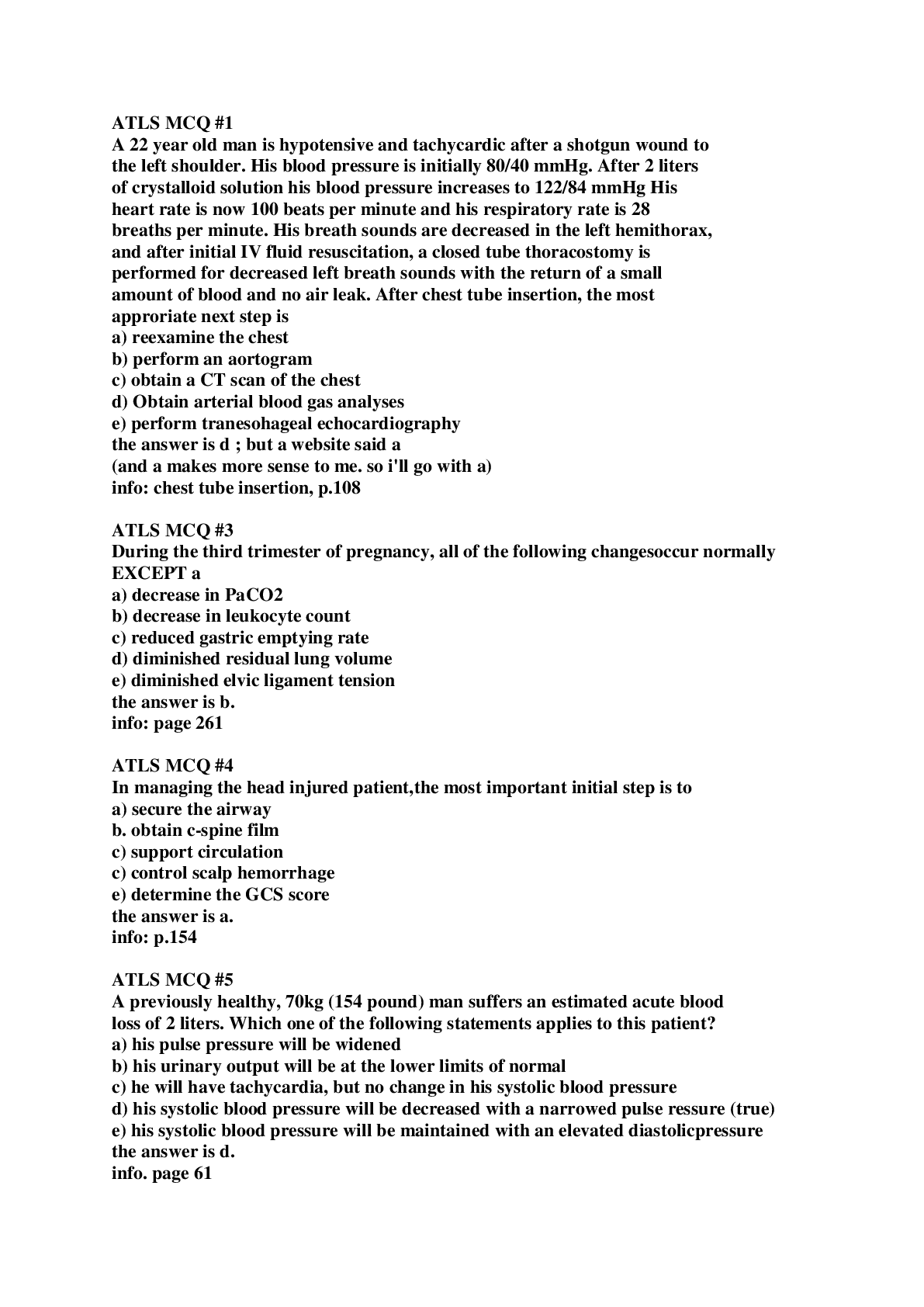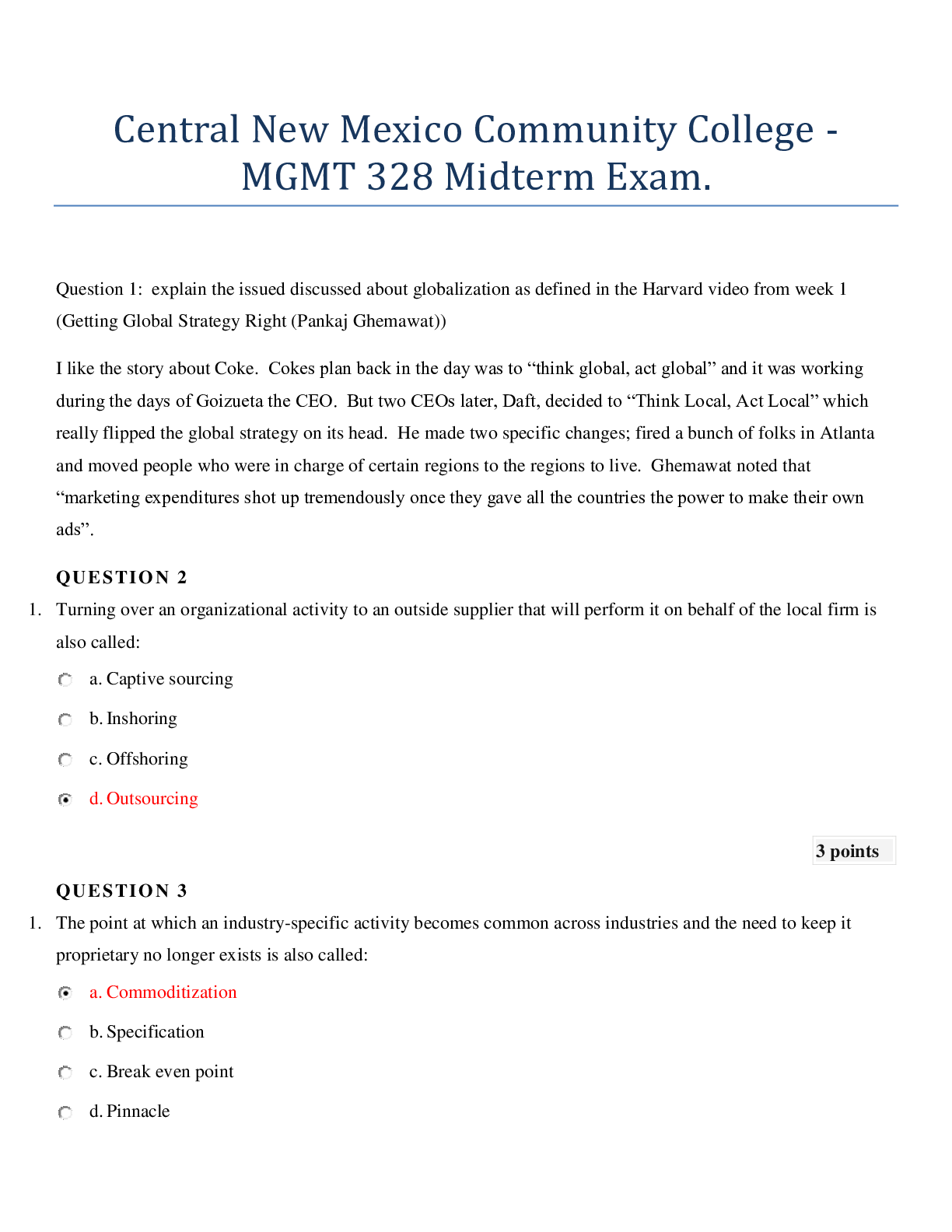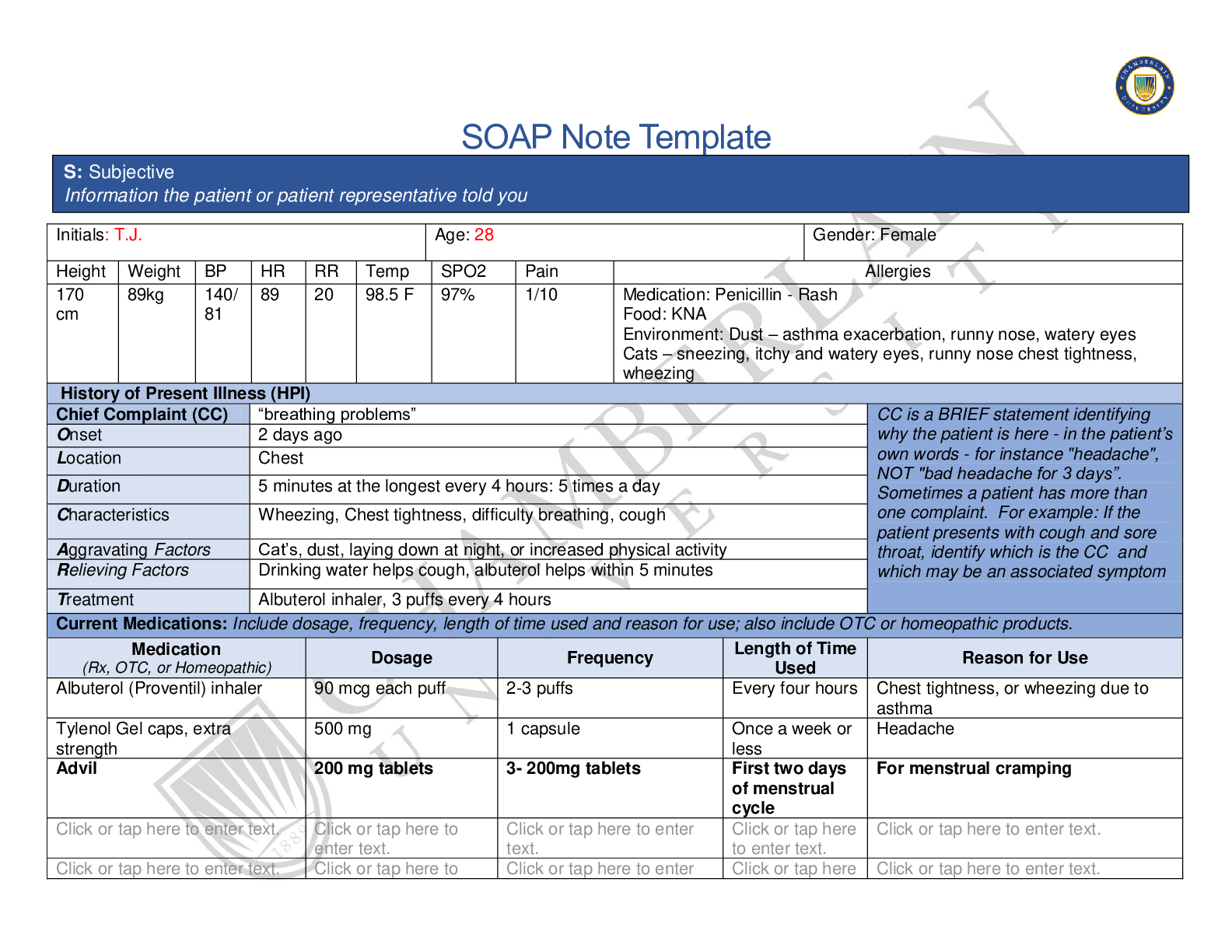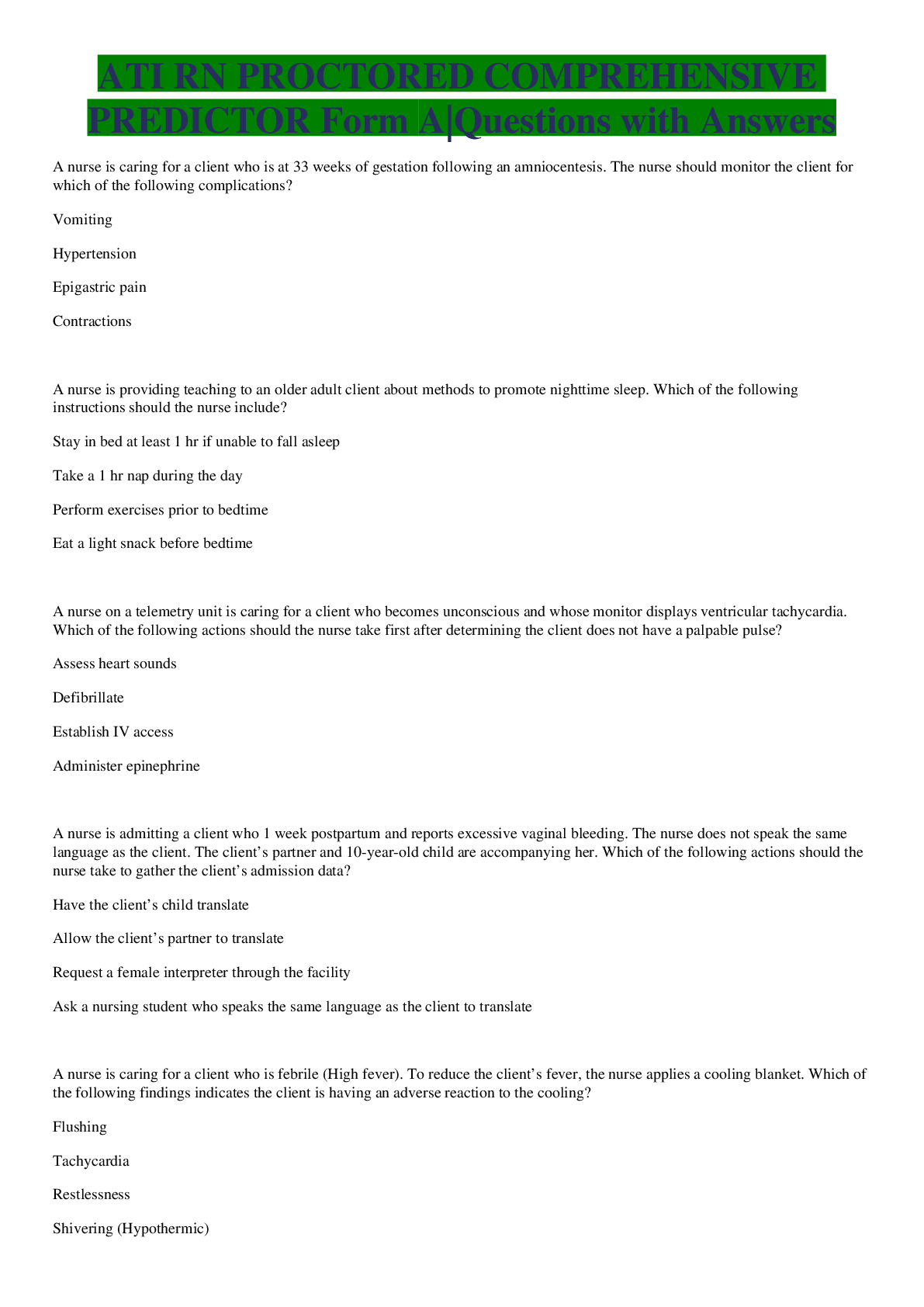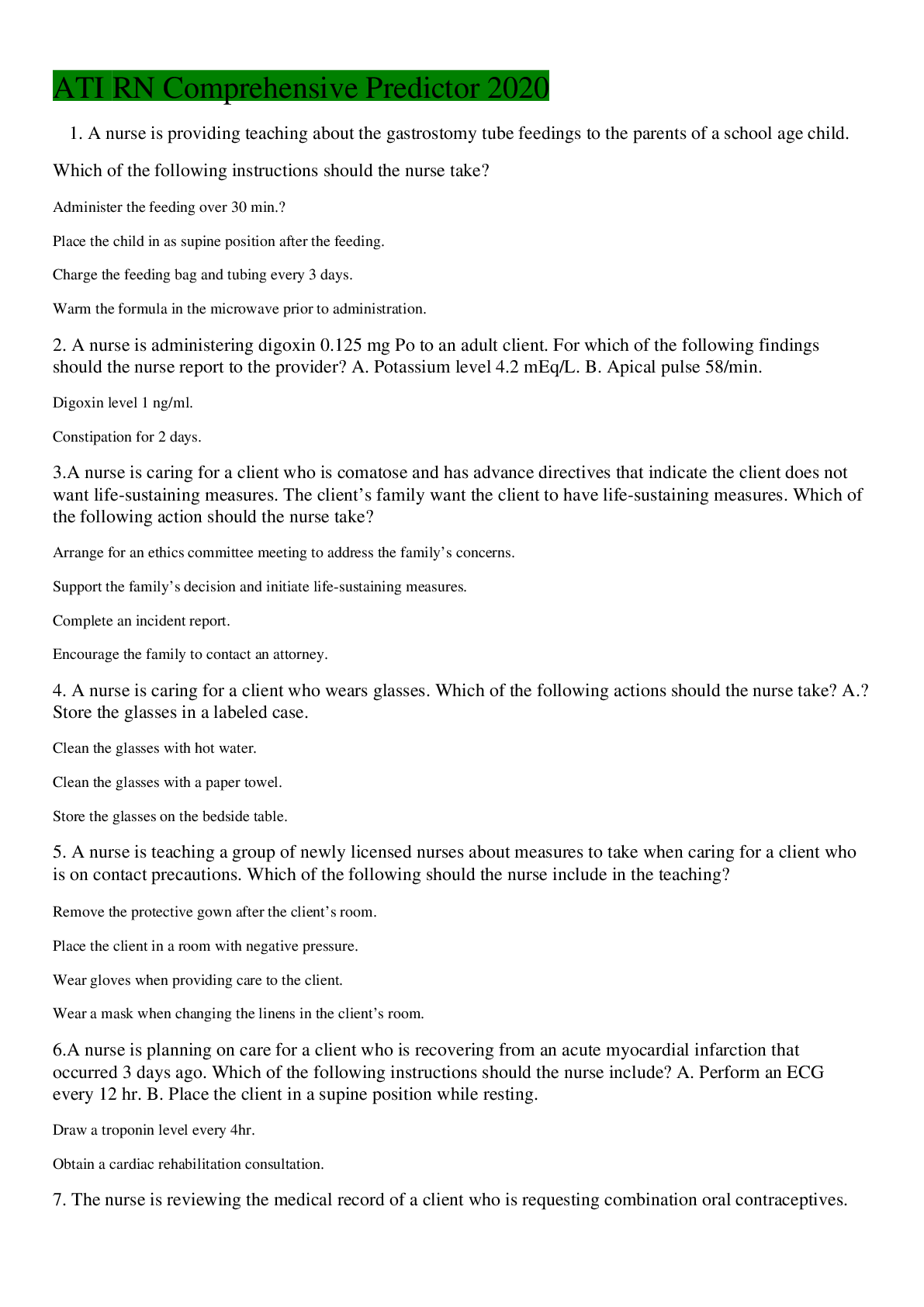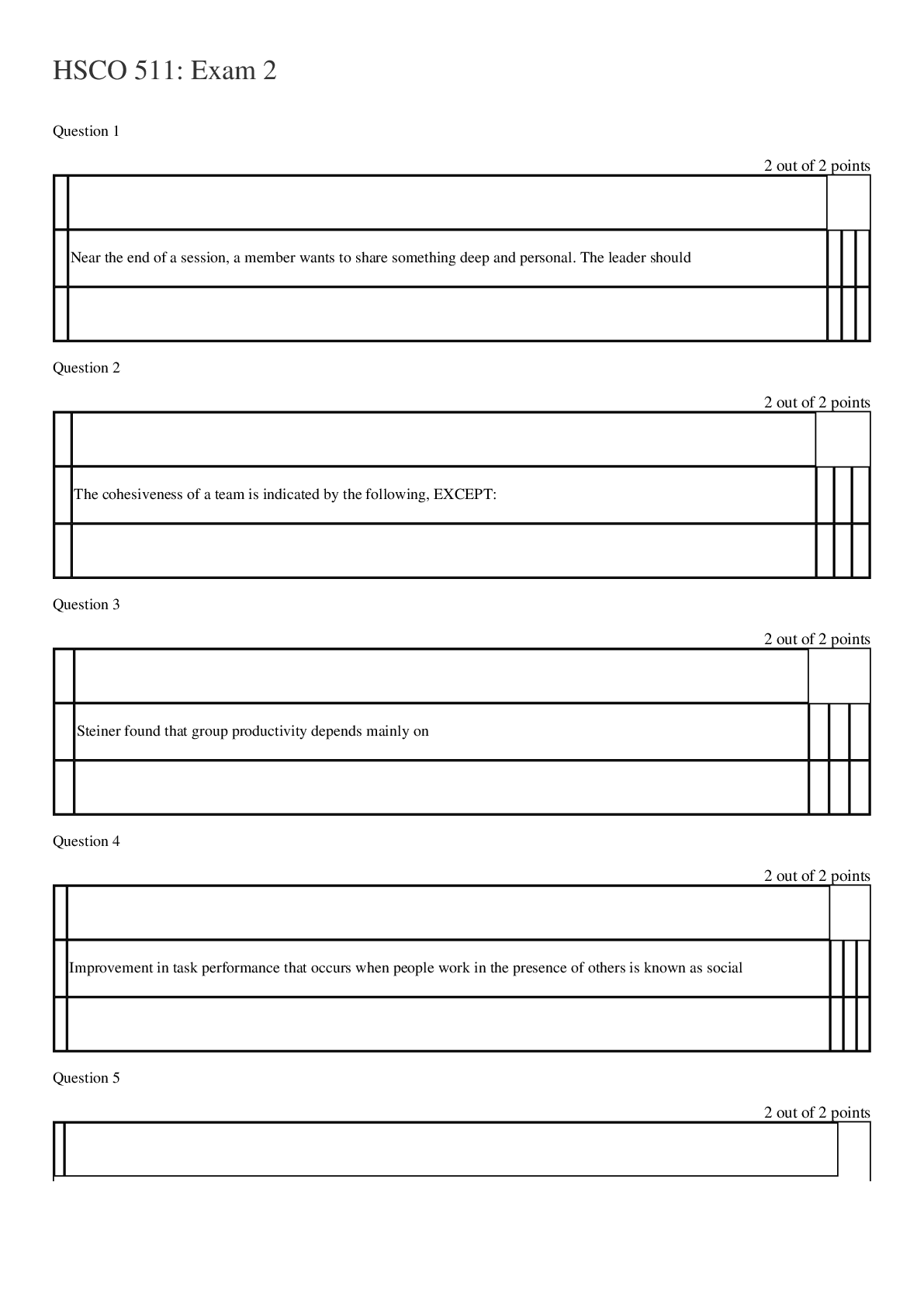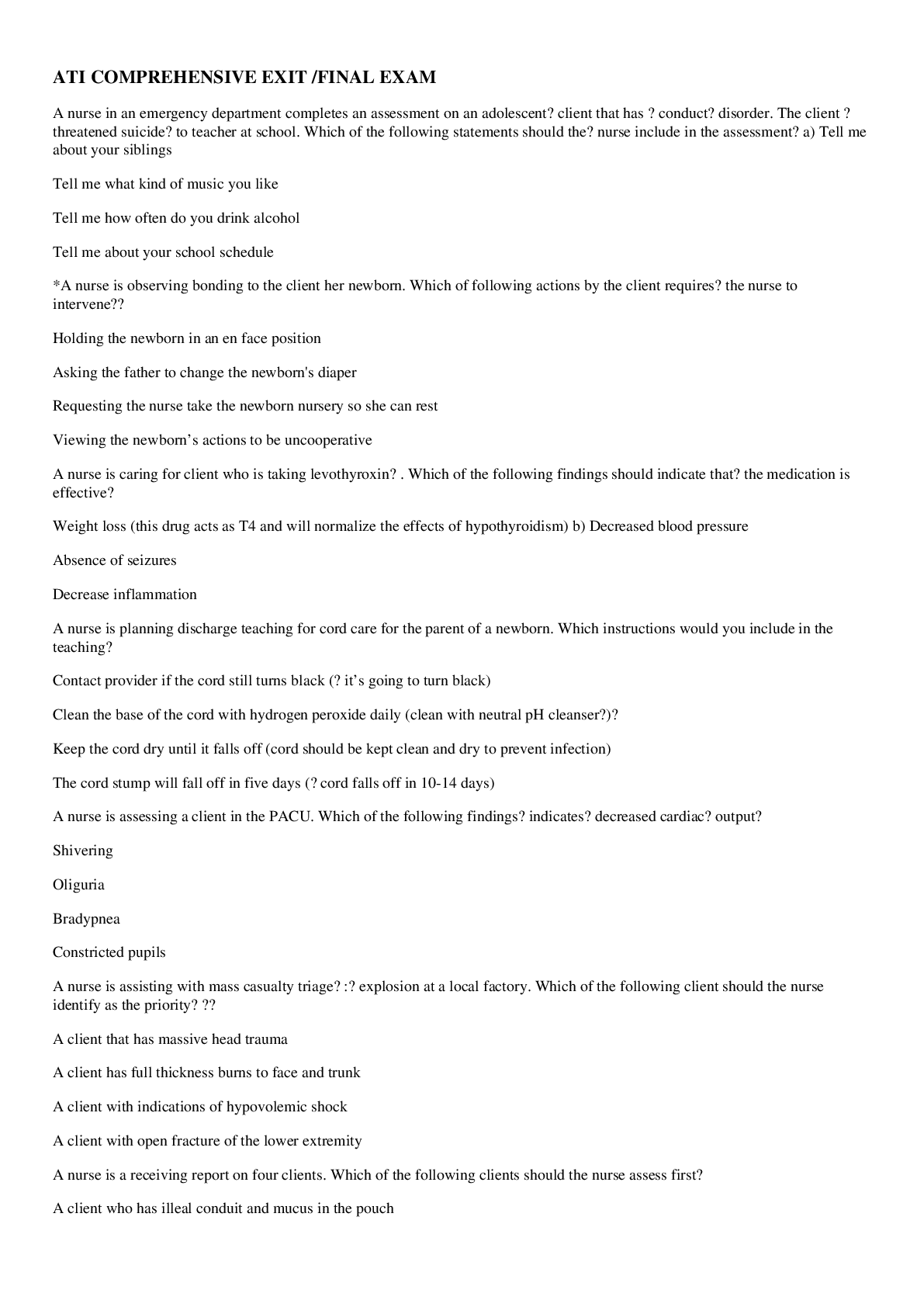Health Care > EXAM > NUR10005- Med Surg 2 - Musculoskeletal test bank with 180 questions with verified answers and graded (All)
NUR10005- Med Surg 2 - Musculoskeletal test bank with 180 questions with verified answers and graded A With Rationale
Document Content and Description Below
Musculoskeletal System From Saunders 1- The nurse is conducting health screening for osteoporosis. Which client is at greatest risk of developing this disorder? Rationale: Risk factors for osteopo... rosis include female gender, being postmenopausal, advanced age, a low-calcium diet, excessive alcohol intake, being sedentary, and smoking cigarettes. Long-term use of corticosteroids, anticonvulsants, and/or furosemide also increases the risk. 2- The nurse has given instructions to a client returning home after knee arthroscopy. Which statement by the client indicates that the instructions are understood? Rationale: After arthroscopy, the client usually can walk carefully on the leg once sensation has returned. The client is instructed to avoid strenuous exercise for at least a few days. The client may resume the usual diet. Signs and symptoms of infection should be reported to the health care provider. 3- The nurse witnessed a vehicle hit a pedestrian. The victim is dazed and tries to get up. A leg appears fractured. Which intervention should the nurse take? Rationale: With a suspected fracture, the victim is not moved unless it is dangerous to remain in that spot. The nurse should remain with the victim and have someone else call for emergency help. A fracture is not reduced at the scene. Before the victim is moved, the site of fracture is immobilized to prevent further injury. 4- Which cast care instructions should the nurse provide to a client who just had a plaster cast applied to the right forearm? Select all that apply. 1. A 25-year-old woman who runs 2. A 36-year-old man who has asthma 3. A 70-year-old man who consumes excess alcohol 4. A sedentary 65-year-old woman who smokes cigarettes 1. "I can resume regular exercise tomorrow." 2. "I can't eat food for the remainder of the day." 3. "I need to stay off the leg entirely for the rest of the day." 4. "I need to report a fever or swelling to my health care provider." 1. Try to reduce the fracture manually. 2. Assist the victim to get up and walk to the sidewalk. 3. Leave the victim for a few moments to call an ambulance. 4. Stay with the victim and encourage him or her to remain still. Rationale: A plaster cast takes 24 to 72 hours to dry (synthetic casts dry in 20 minutes). The cast and extremity should be elevated to reduce edema if prescribed. A wet cast is handled with the palms of the hand until it is dry, and the extremity is turned (unless contraindicated) so that all sides of the wet cast will dry. A cool setting on the hair dryer can be used to dry a plaster cast (heat cannot be used on a plaster cast because the cast heats up and burns the skin). The cast needs to be kept clean and dry, and the client is instructed not to stick anything under the cast because of the risk of breaking skin integrity. The client is instructed to monitor the extremity for circulatory impairment, such as pain, swelling, discoloration, tingling, numbness, coolness, or diminished pulse. The health care provider is notified immediately if circulatory impairment occurs. 5- The nurse is evaluating a client in skeletal traction. When evaluating the pin sites, the nurse would be most concerned with which finding? Rationale: The nurse should monitor for signs of infection such as inflammation, purulent drainage, and pain at the pin site. However, some degree of inflammation, pain at the pin site, and serous drainage would be expected; the nurse should correlate assessment findings with other clinical findings, such as fever, elevated white blood cell count, and changes in vital signs. Additionally, the nurse should compare any findings to baseline findings to determine if there were any changes. 6- The nurse is assessing the casted extremity of a client. Which sign is indicative of infection? Rationale: Signs of infection under a casted area include odor or purulent drainage from the cast or the presence of "hot spots," which are areas of the cast that are warmer than others. The health care provider should be notified if any of these 1. Keep the cast clean and dry. 2. Allow the cast 24 to 72 hours to dry. 3. Keep the cast and extremity elevated. 4. Expect tingling and numbness in the extremity. 5. Use a hair dryer set on a warm to hot setting to dry the cast. 6. Use a soft, padded object that will fit under the cast to scratch the skin under the cast. 1. Redness around the pin sites 2. Pain on palpation at the pin sites 3. Thick, yellow drainage from the pin sites 4. Clear, watery drainage from the pin sites 1. Dependent edema 2. Diminished distal pulse 3. Presence of a "hot spot" on the cast 4. Coolness and pallor of the extremity occur. Signs of impaired circulation in the distal limb include coolness and pallor of the skin, diminished distal pulse, and edema. 7- A client has sustained a closed fracture and has just had a cast applied to the affected arm. The client is complaining of intense pain. The nurse elevates the limb, applies an ice bag, and administers an analgesic, with little relief. Which problem may be causing this pain? Rationale: Most pain associated with fractures can be minimized with rest, elevation, application of cold, and administration of analgesics. Pain that is not relieved by these measures should be reported to the health care provider because pain unrelieved by medications and other measures may indicate neurovascular compromise. Because this is a new closed fracture and cast, infection would not have had time to set in. Intense pain after casting is normally not associated with anxiety or the recent occurrence of the injury. Treatment following the fracture should assist in relieving the pain associated with the injury. 8- The nurse is admitting a client with multiple trauma injuries to the nursing unit. The client has a leg fracture and had a plaster cast applied. Which position would be best for the casted leg? Rationale: A casted extremity is elevated continuously for the first 24 to 48 hours to minimize swelling and promote venous drainage. Options 1, 2, and 3 are incorrect. 9- A client is being discharged to home after application of a plaster leg cast. Which statement indicates that the client understands proper care of the cast? 1. Infection under the cast 2. The anxiety of the client 3. Impaired tissue perfusion 4. The recent occurrence of the fracture 1. Elevated for 3 hours, then flat for 1 hour 2. Flat for 3 hours, then elevated for 1 hour 3. Flat for 12 hours, then elevated for 12 hours 4. Elevated on pillows continuously for 24 to 48 hours 1. "I need to avoid getting the cast wet." 2. "I need to cover the casted leg with warm blankets." 3. "I need to use my fingertips to lift an [Show More]
Last updated: 1 year ago
Preview 1 out of 54 pages
Instant download

Buy this document to get the full access instantly
Instant Download Access after purchase
Add to cartInstant download
Reviews( 0 )
Document information
Connected school, study & course
About the document
Uploaded On
Sep 12, 2022
Number of pages
54
Written in
Additional information
This document has been written for:
Uploaded
Sep 12, 2022
Downloads
0
Views
26

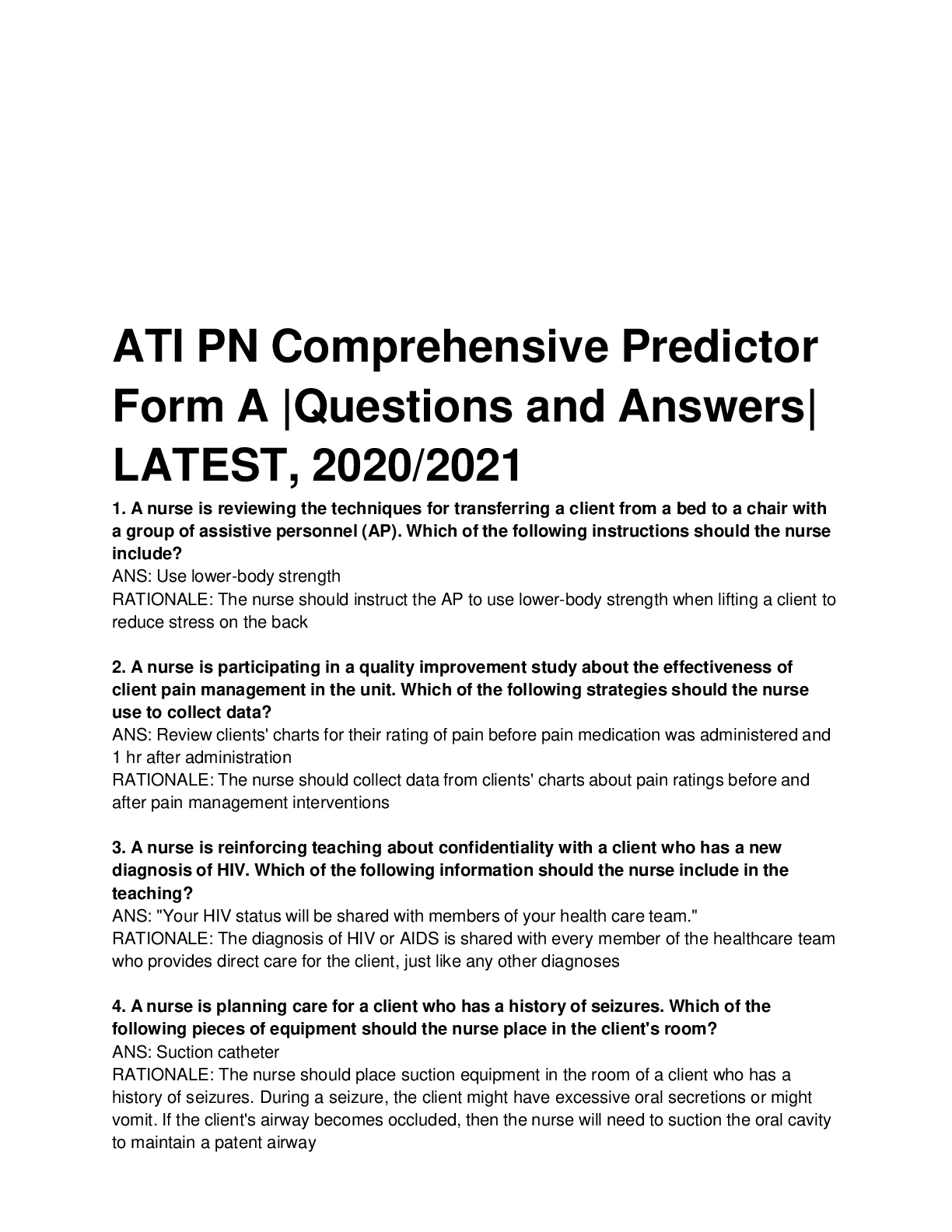
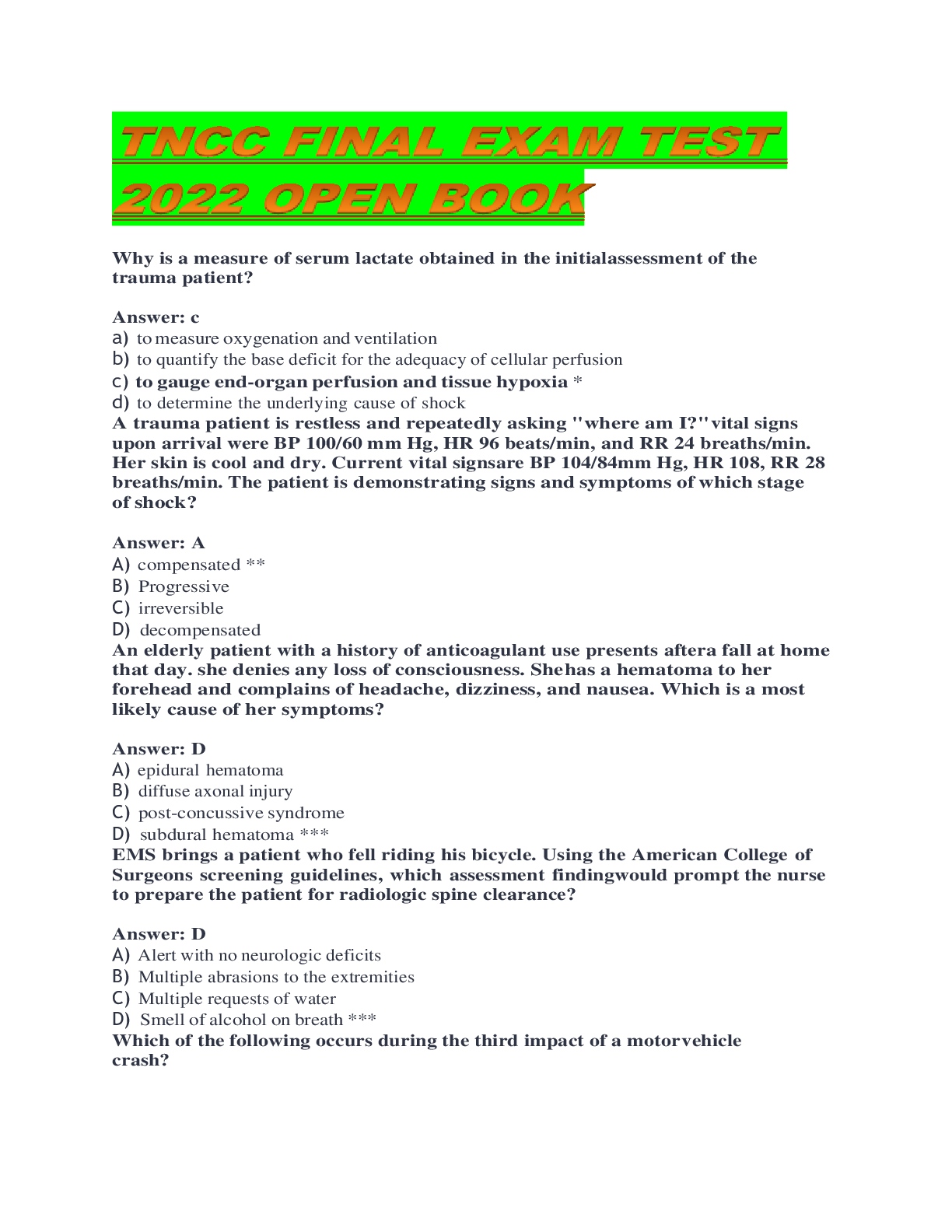
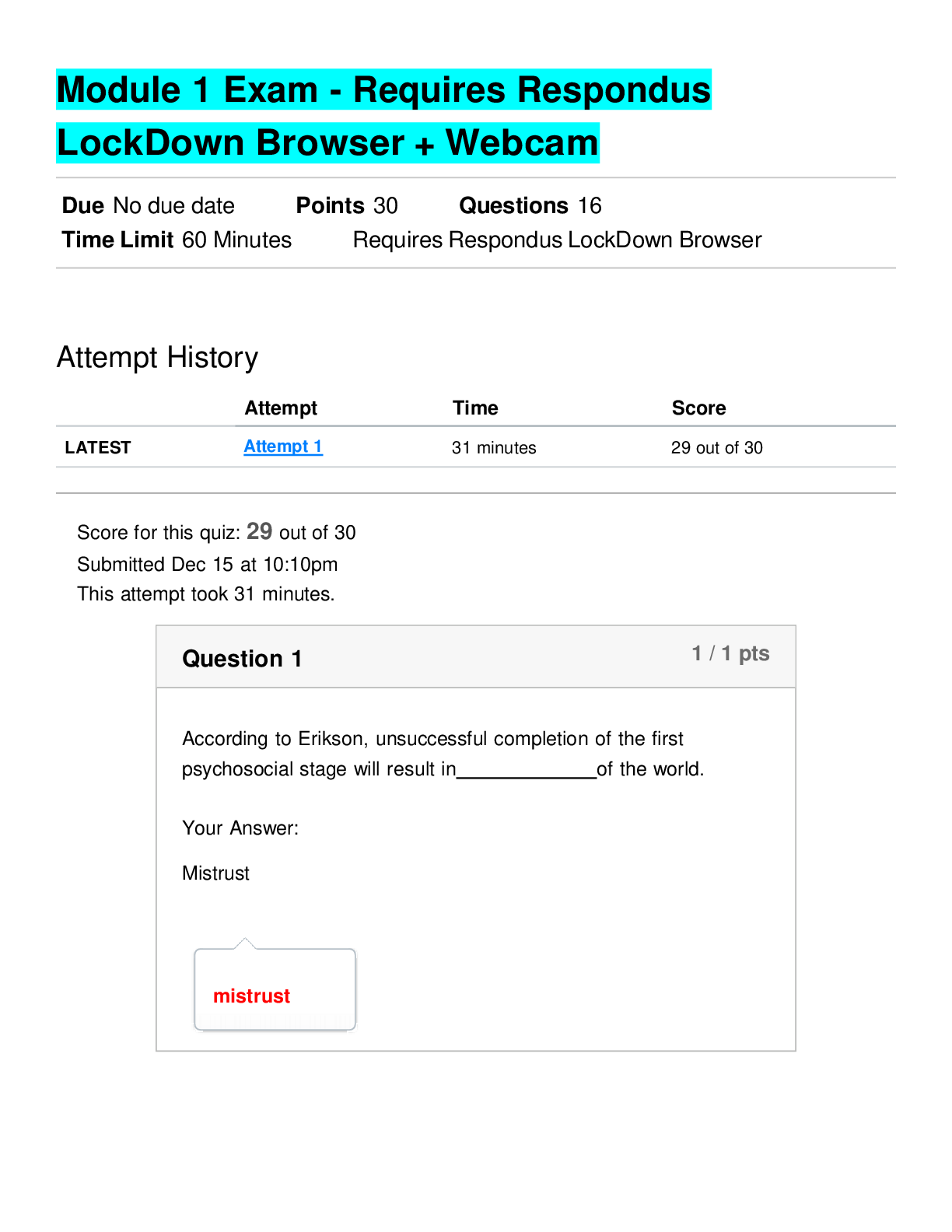



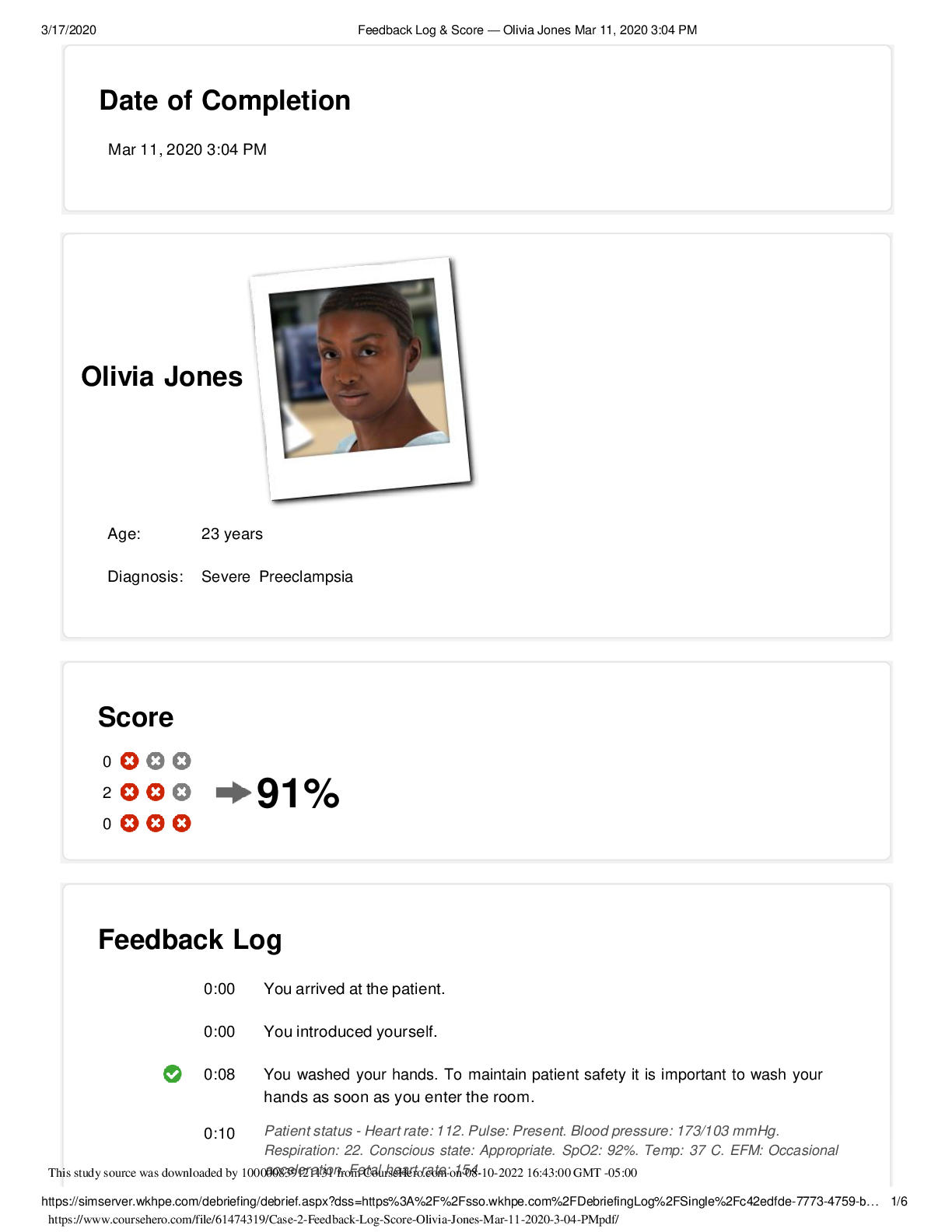
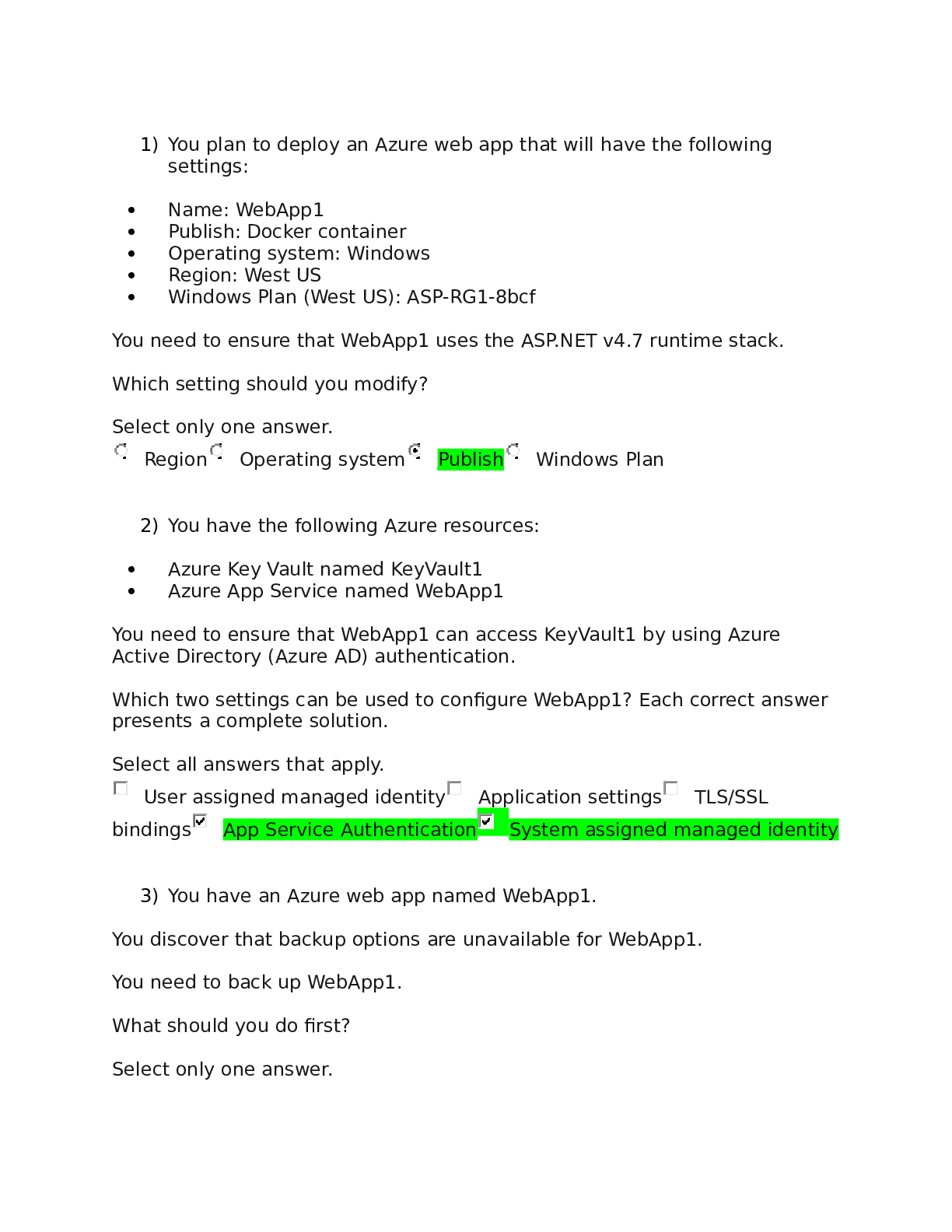
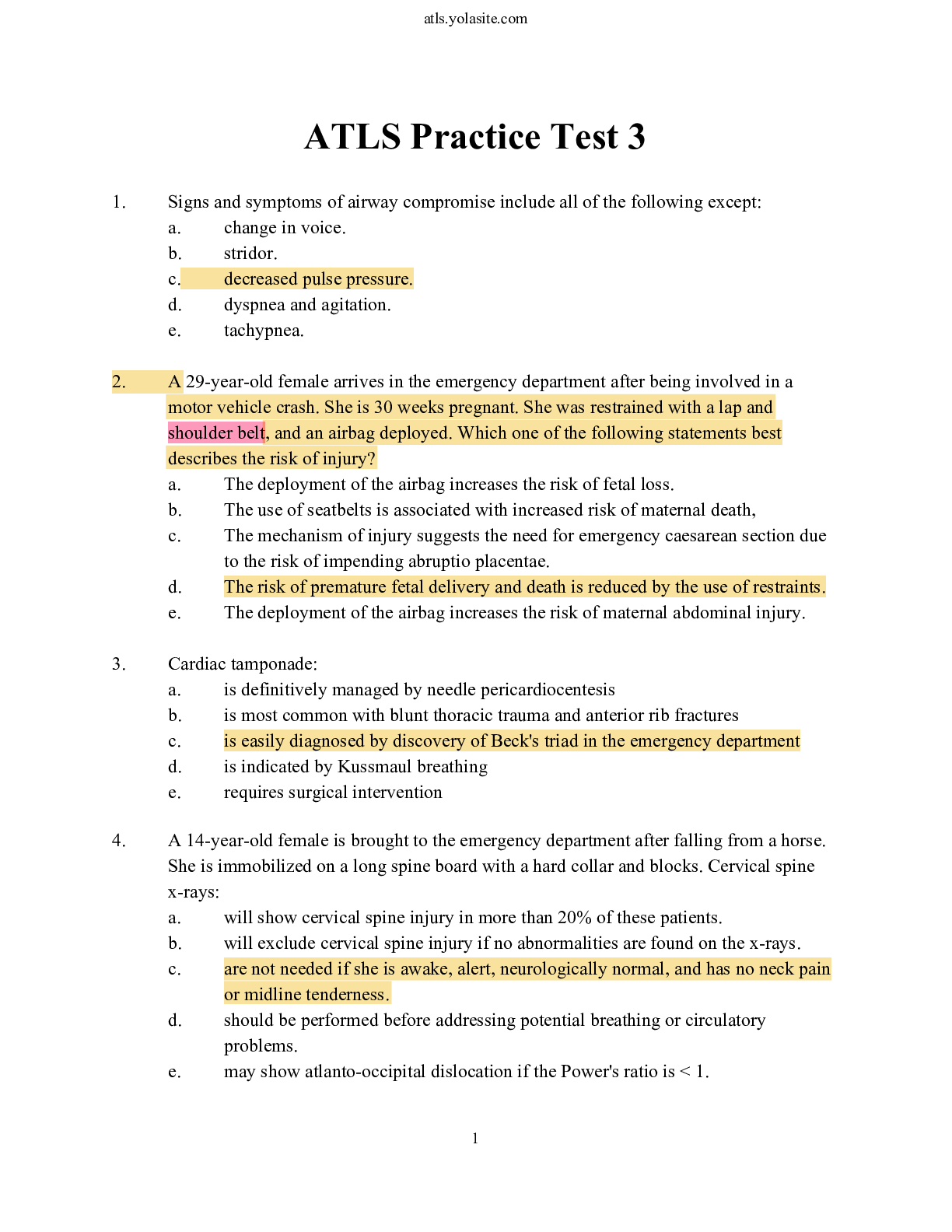
pdf (1).png)
